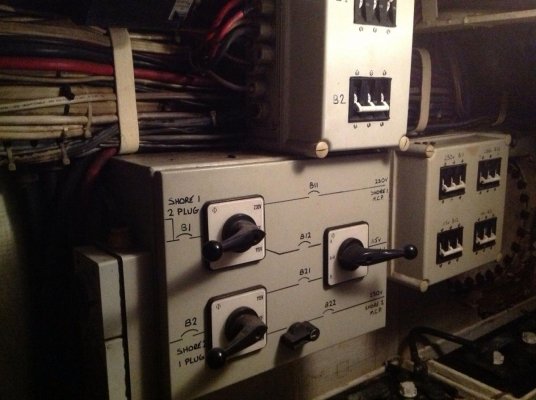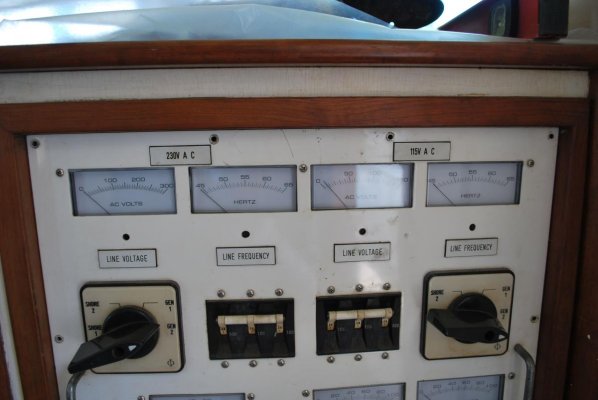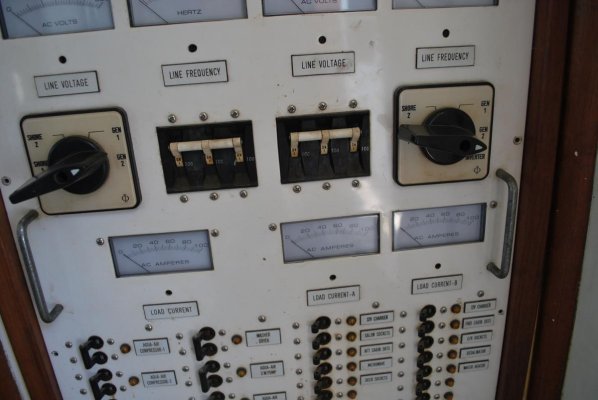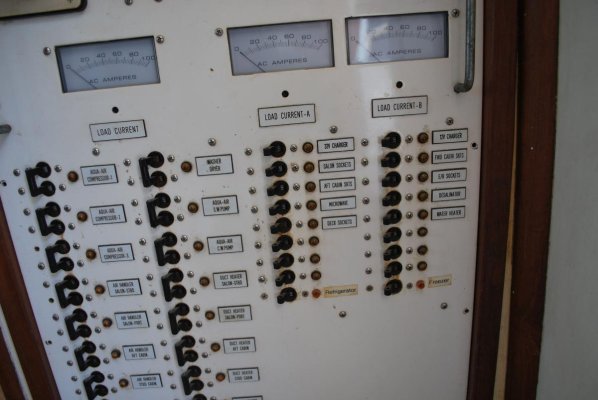To answer all of your comments.... yes, yes and yes. My story in a nut shell, I live in San Antonio and the boat is in Slidell La, just north of New Orleans. I bought it two years ago and have been making the 8 hour drive on weekends to work on it getting it ready for the trip to Texas. It has been on the hard for the past two years while the yard has been working on the exterior paint and fixing the damaged mast. The yard did not have shore power available where the boat was blocked. I knew as soon as it was in the water I would be able to apply shore power, but before I did that I hired an ABYC certified electrician to come look at the boat. The A/C electrical system is different, see attached photo. He was a nice knowledgeable guy but the system was too different for him and he could not figure it out(see my "what is a SHINASA post, he could not figure out what it is either) so his recommendation was to start over, his estimate was $10,000 in design fees alone. The boat had a compete refit in the early 90s, so yes the wiring is old but at that point we did not know if it was broken, why fix it if it is not broken.... I want a safe boat but I don't have an open check book and I can't see replacing something if it is safe and works.
As for reading books, yes I have been reading MOTORBOAT ELECTRICAL and electronics manual by John Payne but I did not have it with me on the boat the day I made this original post.
With a bit of time... chasing wires, reading books I was able to figure the system out... currently she is plugged into shore power and working great. For those who want the long story of how it works read on.
The boat has two 125/250 50 amp plugs... as soon as the wires enter the boat they are combined(red to red, black to black, white to white and green to green) and go into a 100 amp breaker labeled B1(just out side of the attached picture) the output of the B1 breaker feeds two things... first it feeds the B1 lever on the upper left of the junction or selector box, where you can select "230", "off", or "115".... the out put of the B1 breaker also goes to the mystery SHINASA box... the two load wires(red and black) go into the box and then output of the SHINASA box(two wires) goes to the input of the 100 amp B2 breaker in the photo..... but when they come back from the SHINASA they are connected to the B2 breaker as LOAD and NEUTRAL(or the white wire) and there is a jumper from the "load" wire to the other "load" pole of the three pole breaker... then the output of the B2 breaker goes to the lower 230 off or 115 selector.... so my assumption is the mystery box changes the phase of two load wire so I have a single full 50 amp 115 wire... from there the output of the selector box goes to the four 100 amp breakers you see in the photo from there it goes to the A/C distribution panel. The A/C distribution panel has a 230 side and two completely separate 115 legs you can see them labeled a A and B.
When the upper selector switch (non mystery box) is set to 230 and the lower selector switch is set to 115 and the selector switch on the right is set to A&B everything works as it should.





